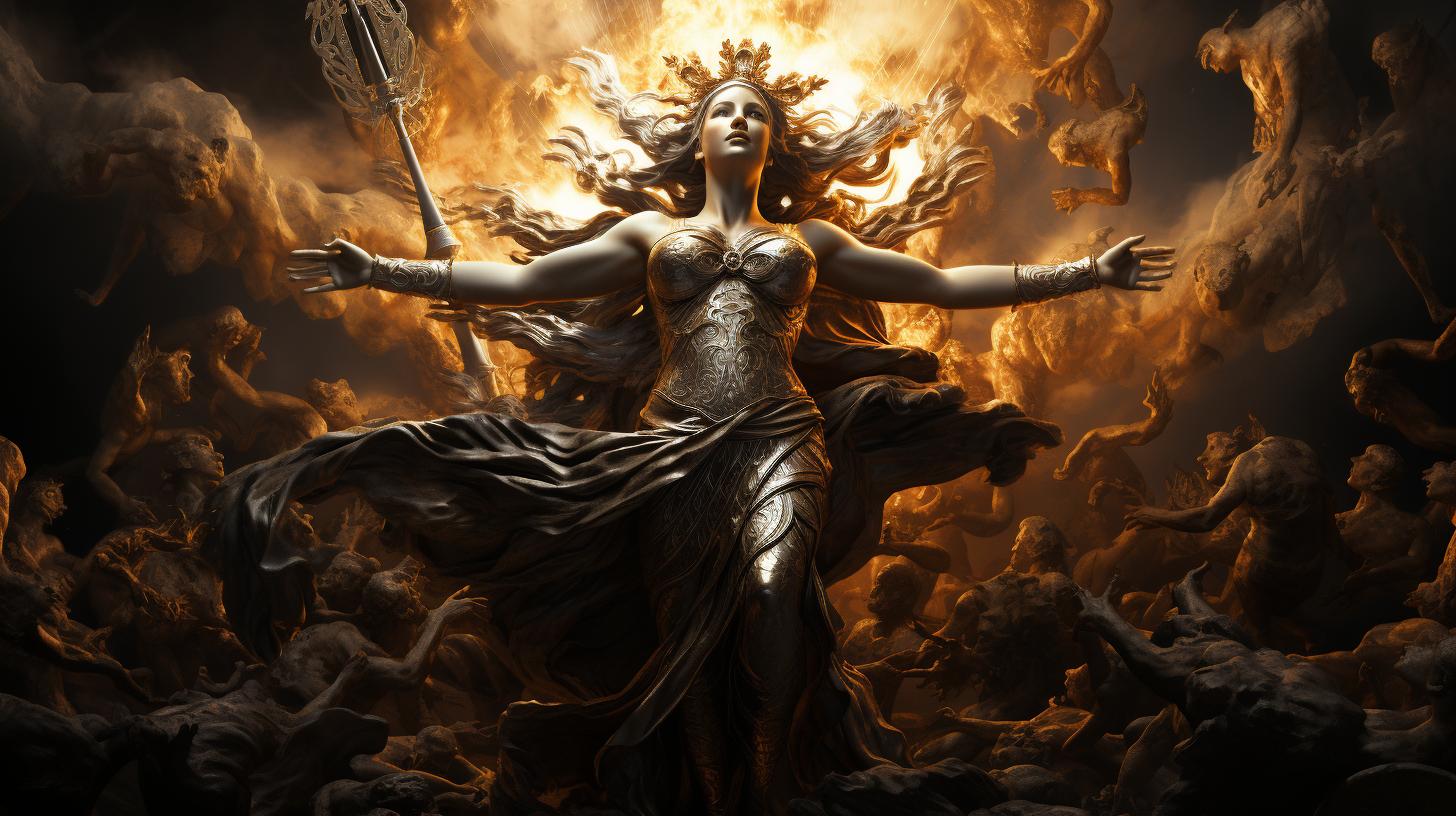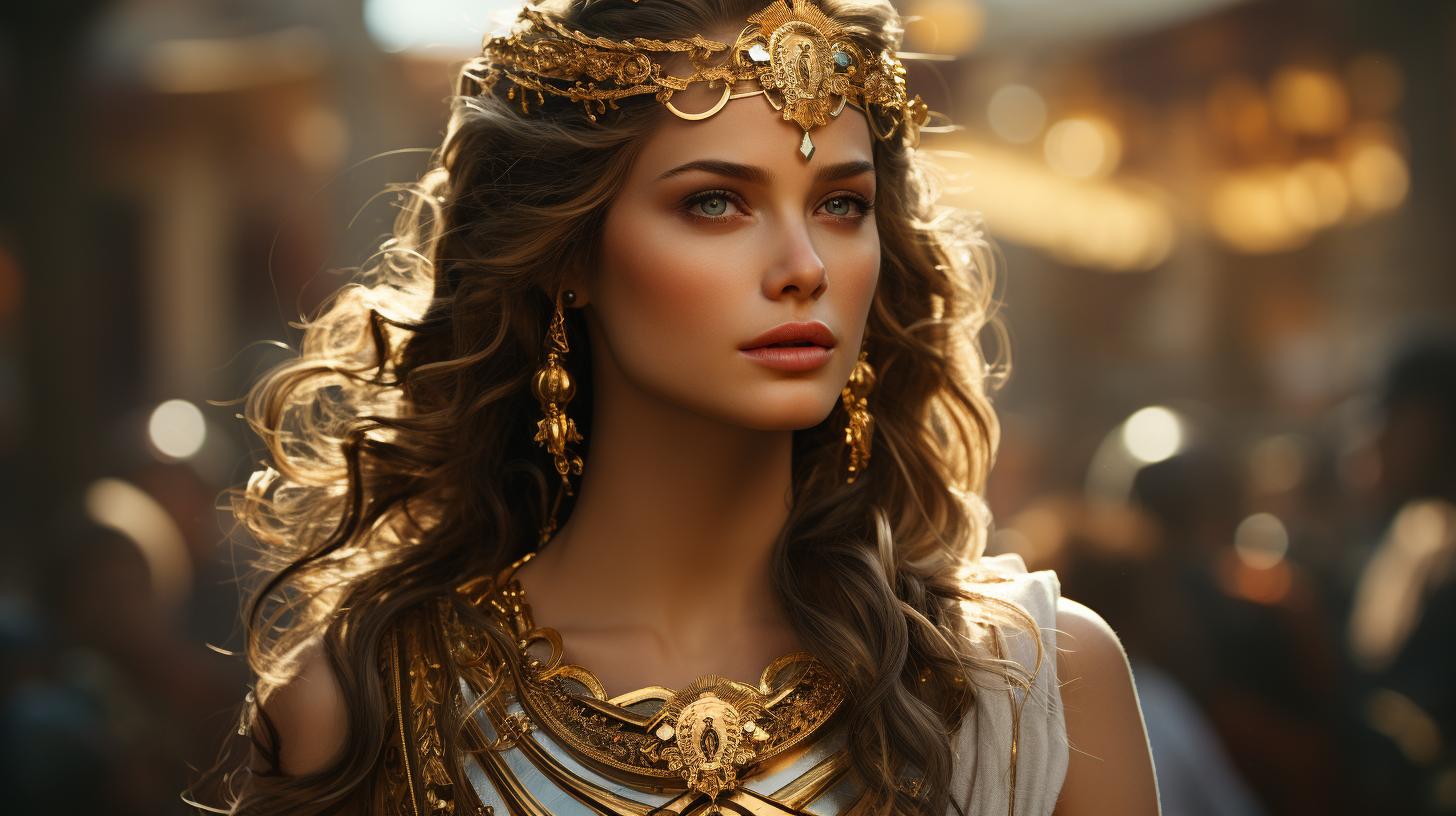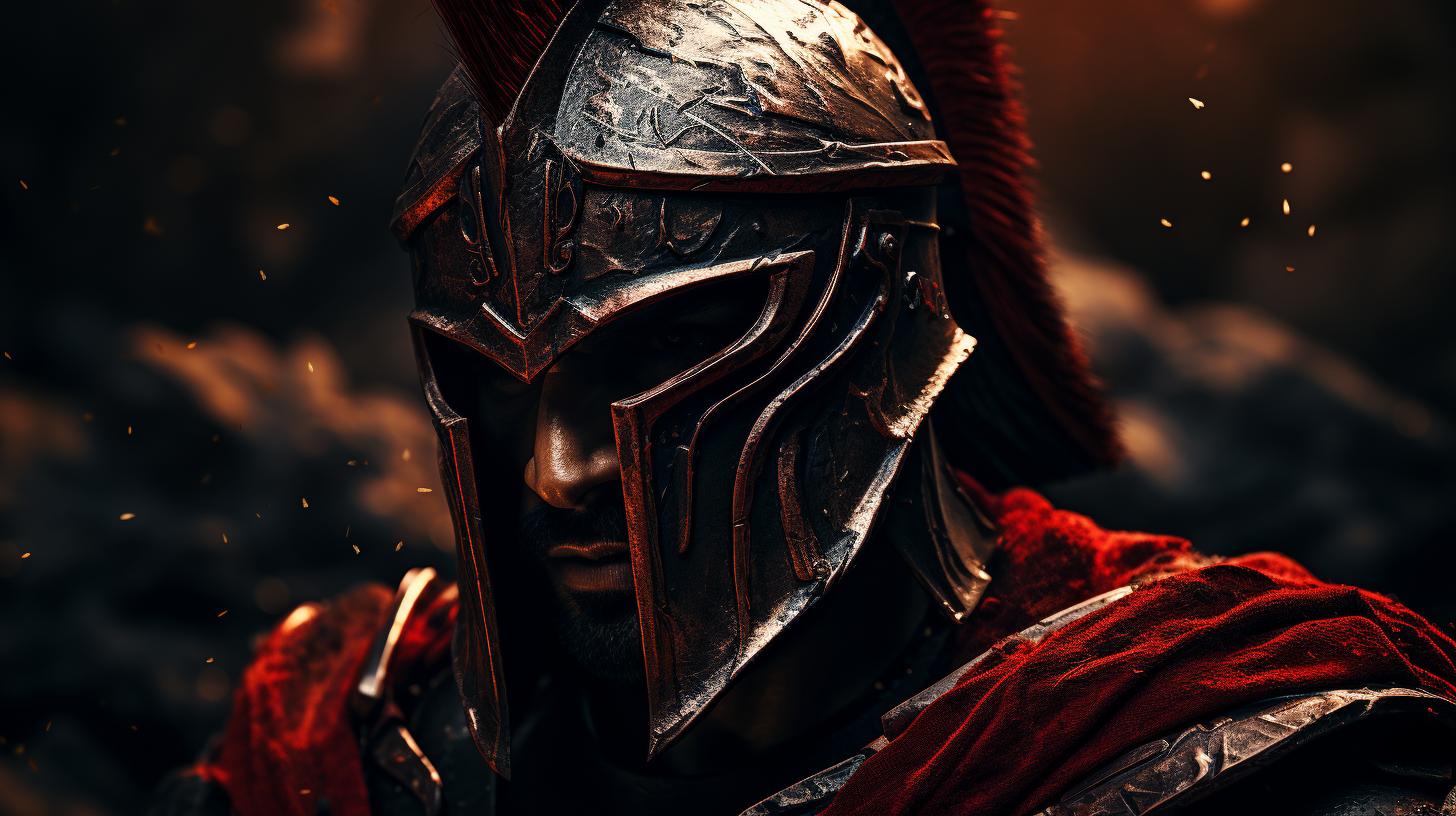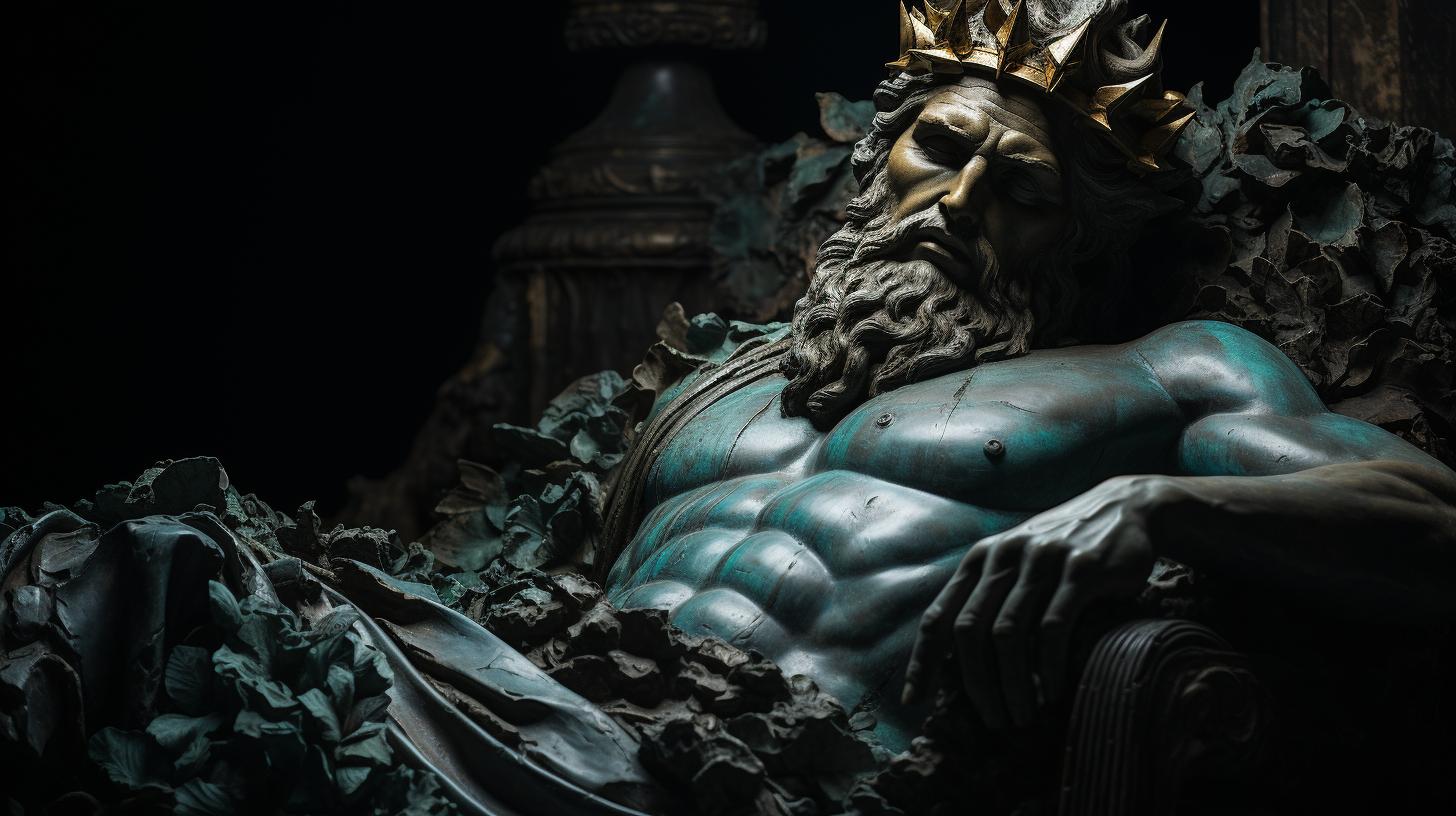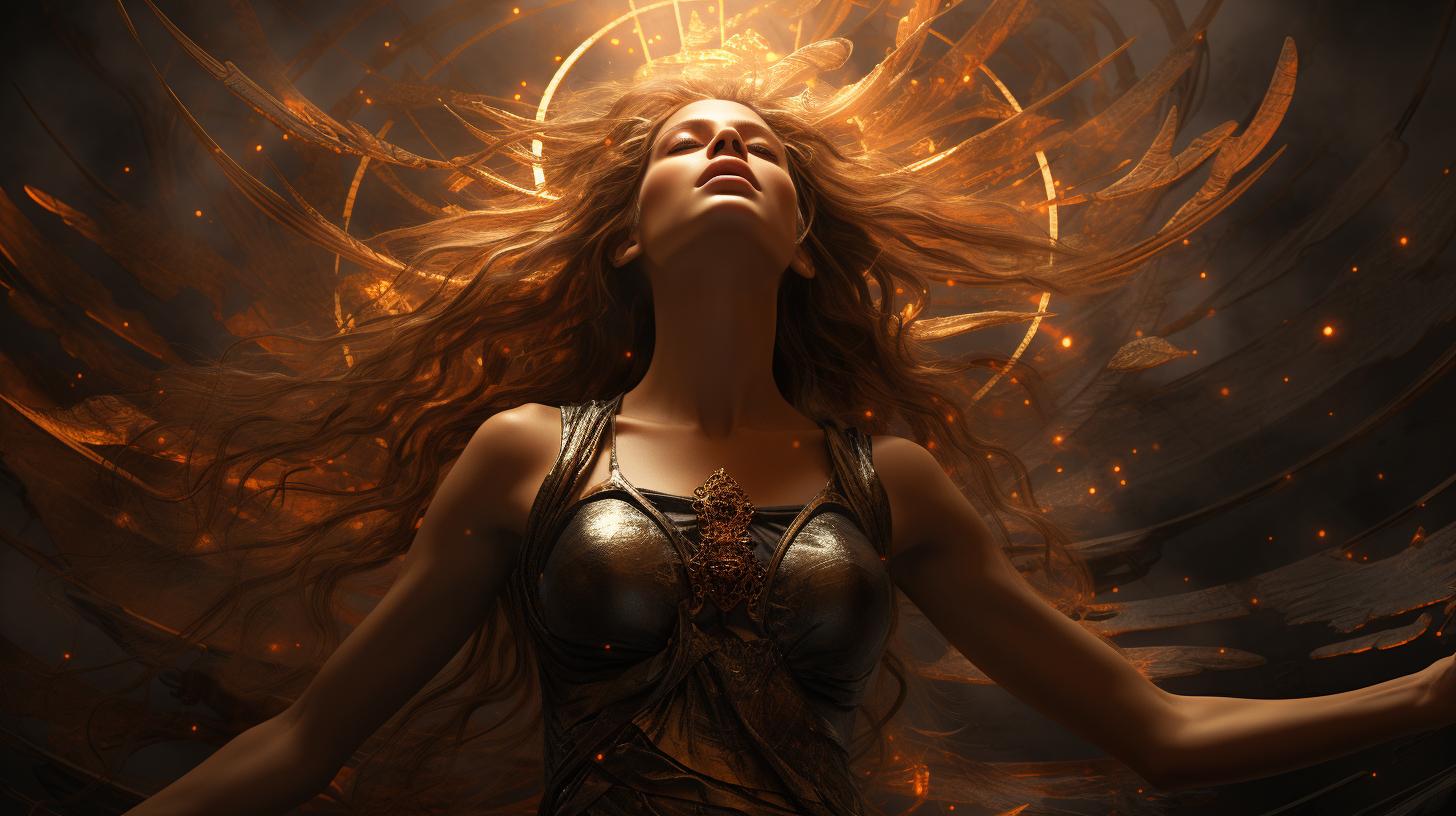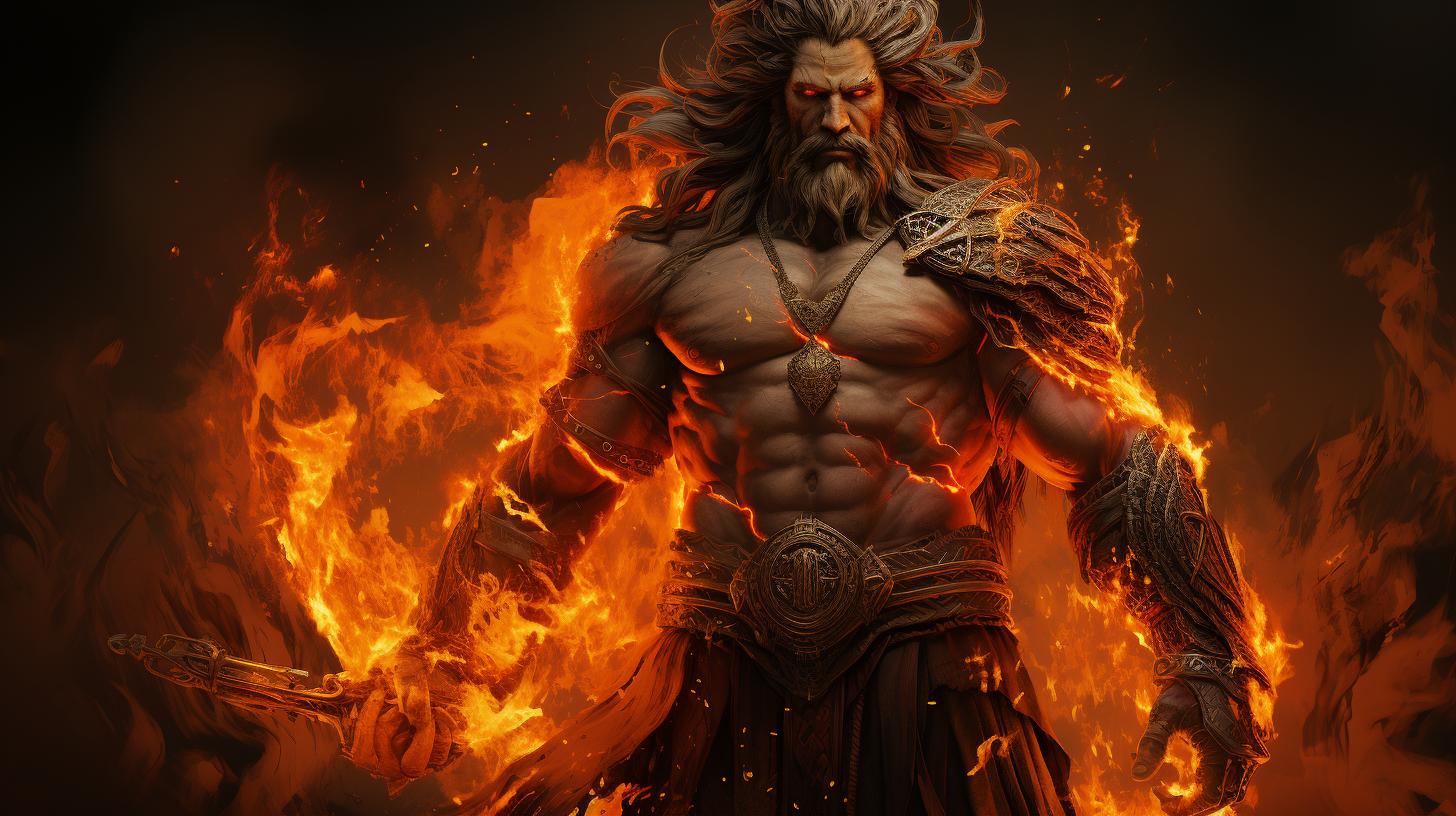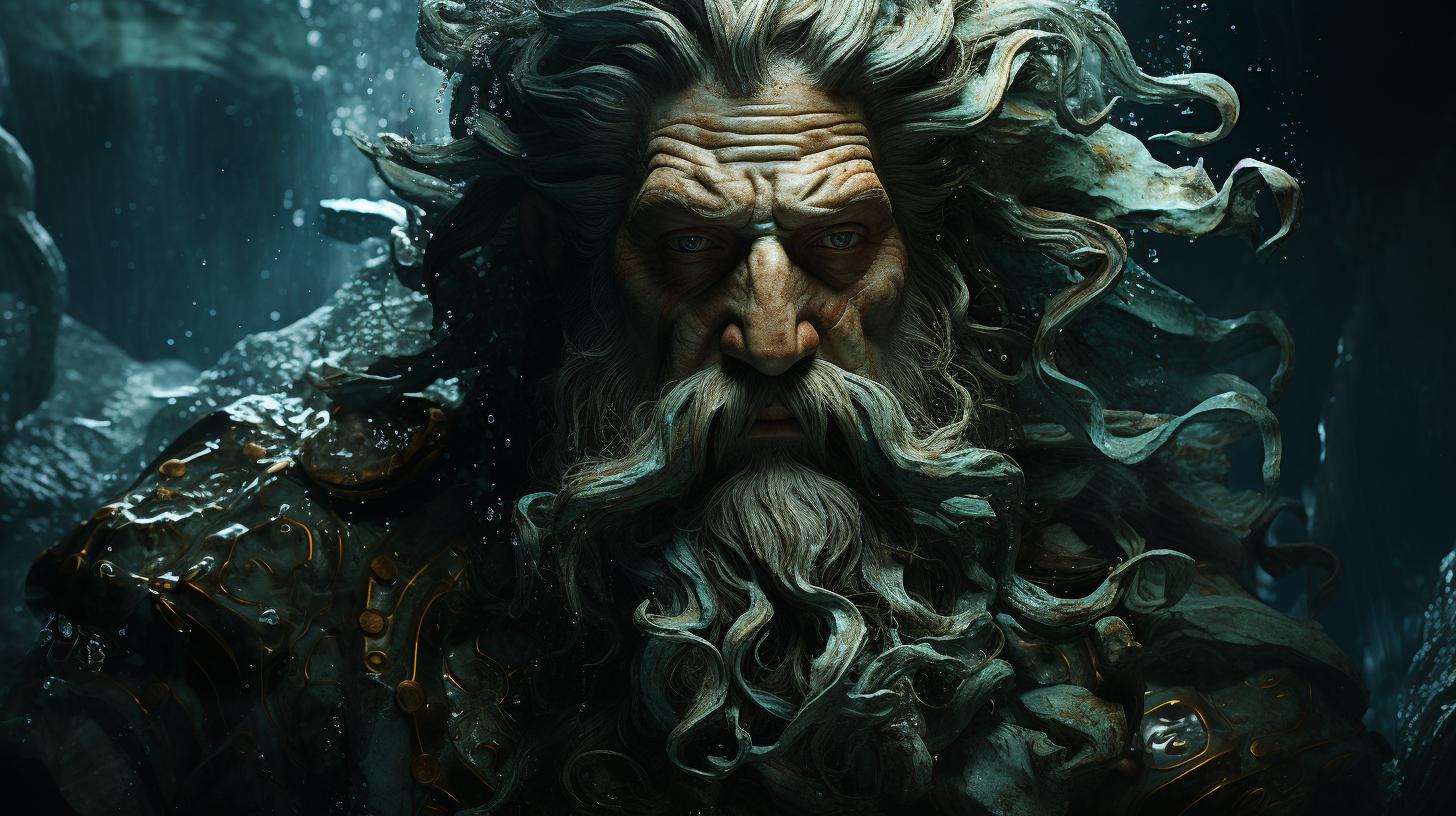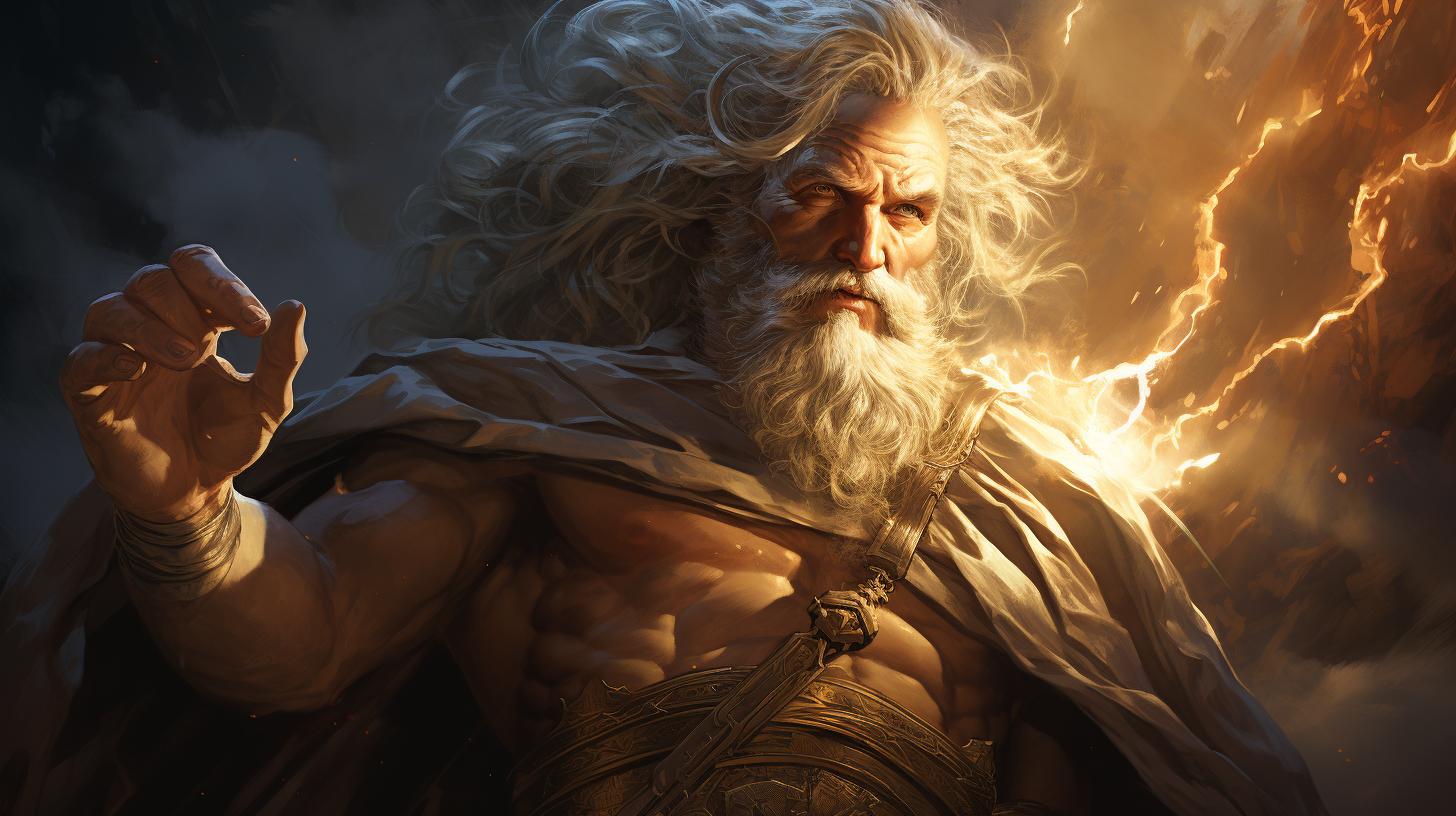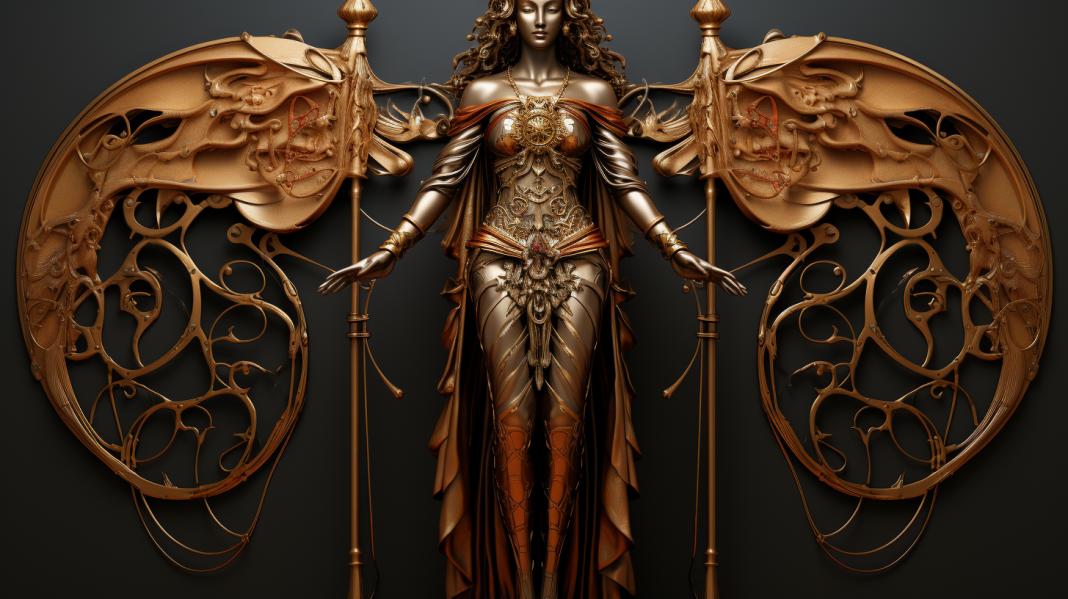Etruscan God Tinia: Exploring the Mighty Deity in Ancient Etruscan Culture
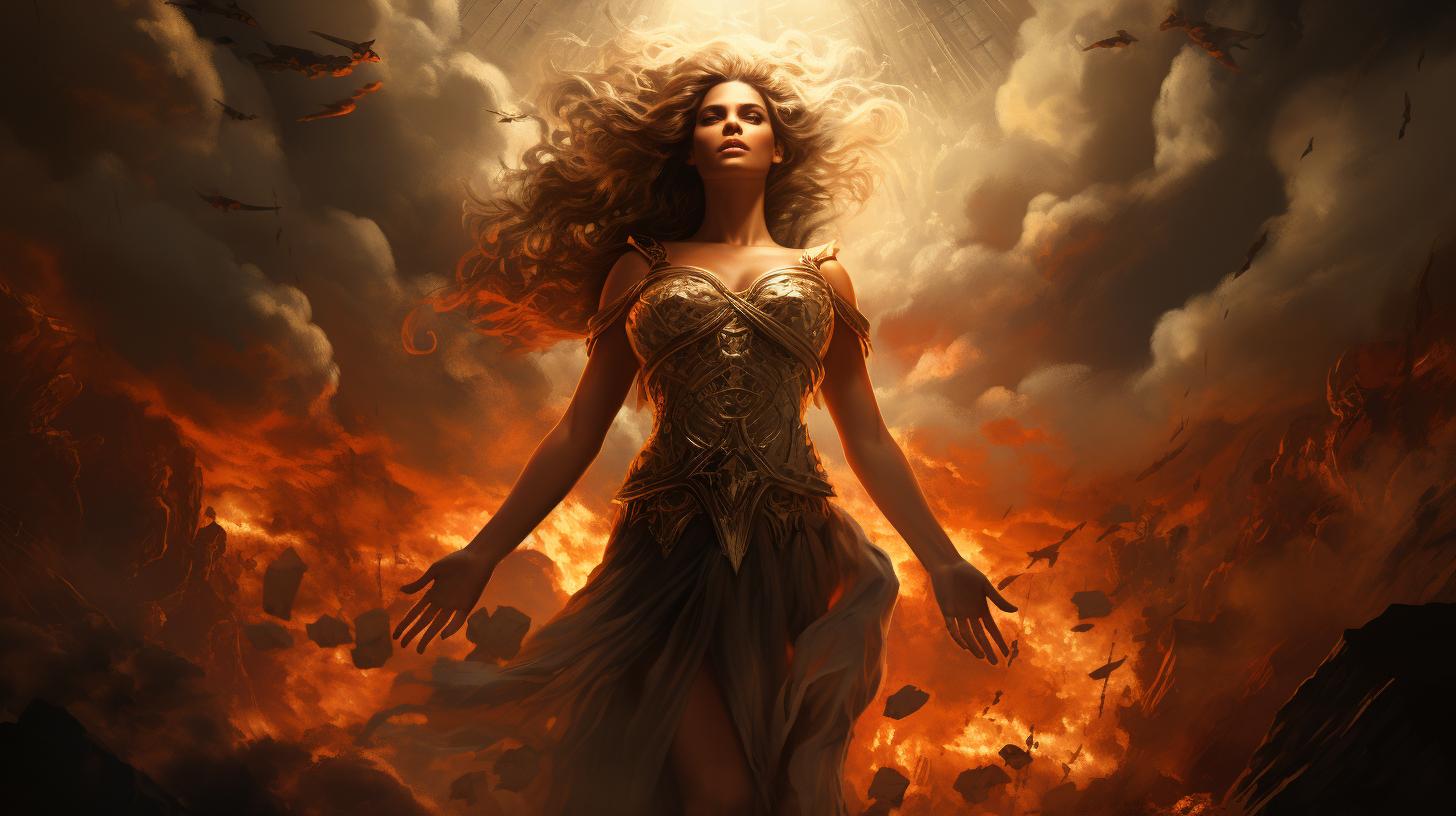
The Etruscan god Tinia, also known as Jupiter in Roman mythology, played a significant role in ancient Etruscan culture and religion. As the deity of the sky, thunder, and storms, Tinia held immense power and was revered as the central figure in the Etruscan pantheon.
His symbol, a three-pointed thunderbolt, represented his dominion over lightning and thunder. Alongside his wife Uni, equivalent to Hera in Greek mythology and Juno in Roman mythology, and the goddess Menerva, linked with Minerva in Roman mythology, Tinia formed a supreme triad in Etruscan belief.
This article examines the origins, symbolism, and worship of Tinia, shedding light on the fascinating world of Etruscan religious traditions.
1. The Origins of Etruscan God Tinia
The deity known as Tinia played a significant role in Etruscan culture and religion. This section delves into the origins and importance of this divine figure within the Etruscan pantheon.
The Etruscan Pantheon and Tinia’s Importance
Within the rich tapestry of Etruscan mythology, the pantheon of gods held a central place. Among these deities, Tinia emerged as a figure of utmost significance. Explore Tinia’s position within the Etruscan pantheon and the reverence attributed to this celestial god.
Tinia’s Role in Etruscan Society and Religion
Beyond his position in the pantheon, Tinia exerted a profound influence on various aspects of Etruscan society and religion. Uncover the multifaceted roles and responsibilities Tinia held within the daily lives and spiritual practices of the Etruscan people.
Comparisons with Greek and Roman Deities
Intriguing parallels can be drawn between Tinia and the gods of Greek and Roman mythology. Discover the similarities and differences between Tinia and his counterparts Zeus and Jupiter, as well as their respective roles within their respective cultures.
Tinia: The God of the Sky and Thunder
In ancient Etruscan culture, Tinia held a prominent role as the god of the sky, thunder, and storms. This section explores the symbolism and iconography associated with Tinia, shedding light on the representation and visual depictions of this powerful deity.
Tinia’s Symbolism and Iconography
Tinia’s symbol, a three-pointed thunderbolt, represents his dominion over lightning and thunder. Through artistic representations, Tinia is often depicted wielding this powerful weapon, displaying his authority and control over the forces of nature.
Connections to Zeus and Jupiter
Similar to the gods Zeus and Jupiter in Greek and Roman mythology, Tinia shares various characteristics and attributes. This section highlights the connections and parallels between Tinia and these well-known sky gods, exploring their shared domains and roles in their respective pantheons.
Tinia’s Powers and Domains
Besides being the god of the sky and thunder, Tinia possessed other powers and domains. This section delves into the various aspects of Tinia’s divine influence, such as his association with weather phenomena, his involvement in agricultural abundance, and his role as a protector and provider for the Etruscan people.
Uni: Tinia’s Consort and Etruscan Equivalent of Hera
Uni, the wife of Tinia, played a significant role in Etruscan religion and mythology. She held an esteemed position among the pantheon of Etruscan gods, akin to the status of Hera in Greek and Juno in Roman mythology.
Uni’s Role in Etruscan Religion
Uni was revered as the goddess of marriage, childbirth, and the divine protector of women. She embodied the ideals of femininity and motherhood, symbolizing fertility, love, and family unity. In Etruscan society, Uni held immense influence over matters related to marriage, ensuring the welfare of couples and the prosperity of their unions.
Parallels with Juno in Roman Mythology
Uni shares several similarities with Juno, the Roman equivalent of Hera. Both goddesses were associated with the protection of women, marriage, and were revered as the queen of the gods.
They possessed similar attributes and were depicted as regal figures radiating authority and power. Uni and Juno embodied the same archetype of the divine feminine in their respective mythologies.
Uni and Tinia’s Relationship and Depictions
Uni’s relationship with Tinia was one of divine union and harmony. As Tinia’s consort, she represented the balance of masculine and feminine energies within the Etruscan pantheon. The depictions of Uni often showcased her standing alongside Tinia, emphasizing their partnership and shared authority.
- Uni was often portrayed wearing a diadem and carrying symbols of her role as a goddess of marriage and childbirth.
- Some artistic representations depicted Uni and Tinia engaged in affectionate gestures, symbolizing their deep connection as divine partners.
- Other artwork showcased Uni in regal attire, highlighting her role as queen of the gods and her association with power and authority.
Through their divine relationship, Uni and Tinia represented the union of cosmic forces and the interconnectedness of the Etruscan pantheon.
Menrva/Menerva: Tinia’s Divine Offspring and Minerva Equivalent
Menrva, also known as Menerva, holds significant importance in Etruscan beliefs. As the divine offspring of Tinia, she is closely associated with wisdom, crafts, and warfare. In Etruscan mythology, she parallels the goddess Minerva in Roman mythology.
Let’s explore the significance of Menrva in Etruscan culture and its comparisons with Minerva.
Menrva’s Significance in Etruscan Beliefs
Menrva played a crucial role as a goddess of wisdom and knowledge in Etruscan society. She was revered for her role in inspirinng artistic and intellectual pursuits, serving as a patroness of scholars, craftsmen, and strategists.
Menrva’s influence extended beyond academia, as she also embodied courage and strategic thinking during times of war.
Comparisons with Minerva in Roman Mythology
Menrva shares notable similarities with Minerva, the Roman goddess of wisdom and warfare. Both goddesses are associated with intellect, strategy, and crafts. However, it’s important to note that there are also distinct differences between them, stemming from their respective cultural origins and religious contexts.
Menrva’s Attributes and Worship
Menrva was venerated through various rituals and festivals, reflecting her diverse domains of influence. Offerings and prayers were dedicated to her to seek guidance and inspiration. Additionally, she often appeared in art and was depicted with symbols such as the owl and the serpent, further emphasizing her association with wisdom and mystery.
In conclusion, Menrva holds a vital place in Etruscan beliefs as the divine offspring of Tinia and the equivalent of the Roman goddess Minerva. Revered for her wisdom and associations with craftsmanship and warfare, Menrva played a pivotal role in Etruscan society and continues to spark intrigue and fascination.
The Cult of Tinia and Other Etruscan Deities
The religious practices and rituals of the Etruscans played a central role in their society, with a particular focus on the worship of Tinia, the supreme deity. These rituals were seen as crucial for maintaining balance and harmony in both the mortal and divine realms.
Etruscan Religious Practices and Rituals
The Etruscans had various religious practices and rituals that were performed to honor the gods, including Tinia. These rituals often involved prayers, offerings, and sacrifices, which were believed to please the gods and ensure their favor.
The Etruscans also had a strong belief in divination, using methods such as examining animal entrails, dream interpretation, and observing natural phenomena to seek guidance from the gods.
Worship of Cupra, Thalna, and Other Gods
In addition to Tinia, the Etruscans worshipped a multitude of other deities.
Cupra, commonly associated with Hera or Juno in Greek and Roman mythology, was revered as a goddess of health, beauty, and fertility. Thalna, another significant goddess, was associated with youth and was possibly linked to Apollo. These and other gods were honored through prayers, rituals, and various forms of offerings.
The Twelve Great Gods and Dii Involuti
The Etruscans recognized a group of twelve great gods known as the Dii Consentes or Complices. These deities formed a council in which Tinia played a prominent role, and they were revered for their immense power and influence.
However, there were other gods known as the Dii Involuti or Veiled Gods who held even greater authority and ruled over both the gods and humans. Tinia himself obeyed their decisions, and they were commonly referred to as the Dii Superiores.
- Jupiter (Tinia) – God of the sky, thunder, and storms
- Juno (Uni) – Goddess of marriage and childbirth
- Minerva (Menrva) – Goddess of wisdom, arts, and warfare
- Hera (Cupra) – Goddess of health, beauty, and fertility
- Apollo (Thalna) – God of youth and possibly sun
- Other gods such as Vulcan (Sethlans), Mars, and Neptune also held significance.
The worship and reverence given to these deities formed a vital part of Etruscan religious life, with rituals and offerings performed to ensure their favor and blessings.
Divine Power and Authority in Etruscan Beliefs
Tinia’s Position as Supreme Deity
Within the intricate belief system of the Etruscans, Tinia held the esteemed position of the supreme deity. He was revered as the central figure in their pantheon, embodying power and authority over all other gods.
Tinia’s association with the sky, thunder, and storms solidified his position as a commanding force in Etruscan religious beliefs. Through his control of lightning and thunder, he demonstrated his dominance and influence over the natural world, earning the respect and devotion of the Etruscan people.
The Influence of Dii Consentes and Dii Superiores
Tinia’s power was not without its checks and balances within Etruscan theology. The council of Dii Consentes, also known as the Twelve Great Gods, acted as advisors and collaborators to Tinia.
These deities were characterized by their fierceness and were held in high regard by the Etruscans. It was believed that their decisions influenced the course of events in both the divine realm and the human world.
Additionally, the Dii Involuti, or Veiled Gods, reigned even above Tinia, commanding ultimate authority. Tinia himself respected their rulings and referred to them as the Dii Superiores, acknowledging their superior power and control.
Beliefs about the World of Gods and Humans
The Etruscans held a unique perspective on the relationship between gods and humans. They believed in the interconnectedness of both realms, with Tinia as the bridge between the divine and mortal worlds.
As the supreme deity, Tinia was seen as the communicator between gods and humans, embodying the power to transmit messages through thunder and lightning. Etruscans believed that Tinia’s presence and influence extended into every aspect of their lives, shaping their destinies and offering blessings or retribution.
They sought to maintain a harmonious relationship with Tinia and the divine realm through offerings, rituals, and adherence to religious practices.
The Etruscan faith in Tinia’s authority and the hierarchical structure of the divine pantheon ensured that the Etruscan civilization remained in balance with the divine order. Their beliefs sanctioned the rule of Tinia as the supreme deity, guided by the counsel of the Dii Consentes and Dii Superiores, and preserved the intricate connection between the world of gods and humans.
Etruscan Mythology and the Genii
Exploring the world of Etruscan mythology allows us to unravel the captivating tales and legends that shaped their religious beliefs. Etruscan myths and legends were rich with gods, heroes, and supernatural beings, providing insight into their cosmology, rituals, and societal values.
Exploring Etruscan Myths and Legends
Etruscan myths and legends were a vital part of their cultural identity. These captivating stories revolved around their deities, tracing their origins, adventures, and interactions with both mortals and other divine beings.
These tales shed light on the Etruscans’ worldview, their understanding of the cosmos, and their beliefs about the role of gods in human affairs.
The Significance of Genii in Etruscan Beliefs
Central to Etruscan mythology were the Genii, celestial spirits or daimons that played a crucial role in the Etruscans’ religious and spiritual practices.
The Genii were seen as intermediaries between the gods and humans, guiding and protecting individuals throughout their lives. They were associated with specific aspects of human existence such as birth, health, prosperity, and death.
The Genii’s Role as Guardians and Guides
The Genii were believed to be individual protective spirits assigned to each person at birth. These guardians watched over individuals, offering guidance, and influencing their destinies. It was believed that the Genii had the power to influence one’s life path and grant fortune or misfortune, depending on their favor.
They were often depicted alongside individuals in artwork, representing their close presence and connection.
Genii in Rituals and Worship
Genii played a significant role in Etruscan rituals and worship practices. They were invoked during various ceremonies, offering prayers and offerings to ensure their favor and protection. Etruscans believed that these spirits would intercede on their behalf, bridging the gap between mortal and divine realms.
The Genii’s presence and involvement in rituals were instrumental in maintaining harmony and balance within the Etruscan religious framework.
Genii’s Role in Divination and Prophecy
Divination and prophecy held great importance in Etruscan society, shaping their decision-making processes and providing insight into the future. The Genii were intimately connected to divination practices, believed to communicate messages from the gods to mortals.
They acted as intermediaries, guiding diviners and seers to interpret signs, omens, and dreams, unravelling the mysteries of the future.
- Divination Techniques and the Genii’s Influence
- Genii in Prophecy and Oracles
- Understanding the Genii’s Messages
Through divination and prophecy, the Etruscans sought to gain insight into their destinies and make informed decisions.
The Genii’s role in this process was vital, as they conveyed divine messages and provided guidance in navigating life’s challenges and opportunities.
The Underworld and Deities Associated with Death
The Underworld held great significance in Etruscan beliefs, with various deities associated with this realm of the afterlife.
Mantus and Mania: Etruscan Gods of the Underworld
Mantus and Mania ruled over the Underworld in Etruscan mythology. Mantus, the male deity, was associated with death, while Mania, the female deity, represented the spirits of the deceased. They were comparable to the Greek gods Hades and Persephone.
Depictions of the Underworld in Etruscan Art
Etruscan art often depicted scenes from the Underworld, providing insights into their beliefs about the afterlife. These depictions showcased the journey of the soul, punishments for the wicked, and rewards for the virtuous.
Charun and Other Infernal Deities
Charun, known as the infernal Mercury, played a prominent role as the deity who guided souls to the Underworld. He was often depicted on tombstones alongside demons and Furies, representing the darker aspects of Etruscan superstition.
Other infernal deities were also honored and feared, underscoring the multifaceted nature of Etruscan views on the afterlife.
Etruscan Gods and Their Roles in Daily Life
Etruscan religion played a significant role in the daily lives of the Etruscan people, shaping their beliefs, practices, and interactions with the divine realm. From the sacred space of their homes to the wider social and cultural aspects of their society, the Etruscan gods held sway over various aspects of daily life.
This section explores the importance of Lares and Penates in Etruscan homes, the impacts of Etruscan religion on social and cultural aspects, and the enduring legacy of Etruscan gods in Roman and Western civilizations.
The Importance of Lares and Penates in Etruscan Homes
In Etruscan homes, the cosmic forces and protective spirits known as Lares and Penates held immense significance. Lares were the household gods who guarded and protected the family and its possessions, ensuring their well-being and prosperity.
They were honored with daily offerings and rituals, symbolizing the strong connection between the divine and the domestic sphere. Similarly, Penates were revered as the deities of the storeroom and were believed to oversee the family’s food storage and sustenance.
Impacts of Etruscan Religion on Social and Cultural Aspects
Etruscan religion permeated various aspects of Etruscan society, influencing social and cultural norms. The rituals, festivals, and religious practices of the Etruscans played a role in shaping their communal identity and strengthening bonds within the community.
Religious ceremonies were a means of communal celebration and often included music, dance, and feasts. Additionally, Etruscan religious beliefs influenced aspects of governance, law, and the role of women in society, reflecting the integral role religion played in shaping Etruscan culture.
Legacy of Etruscan Gods in Roman and Western Civilizations
The influence of Etruscan gods extended beyond the civilization itself, leaving a lasting impact on subsequent cultures. The Romans, who were strongly influenced by Etruscan culture, adopted and assimilated many Etruscan deities into their own pantheon.
Gods like Tinia, Uni, and Menrva became Jupiter, Juno, and Minerva in Roman mythology, respectively. These Etruscan-originated gods continued to be worshipped and revered in the Roman Empire, merging with the existing Roman religious traditions.
Furthermore, the Etruscan religious practices and beliefs have left a cultural imprint on Western civilization, shaping subsequent religious and mythological traditions.
Unraveling the Secrets of Etruscan Religion
The mysteries surrounding the religious practices of the ancient Etruscans continue to captivate researchers and scholars today. This section delves into the ongoing research and unanswered questions that surround Etruscan religion, shedding light on this enigmatic aspect of their culture.
Unanswered Questions and Ongoing Research
Despite extensive studies, there are still unanswered questions regarding various aspects of Etruscan religion. Researchers continue to explore the significance of certain rituals, symbols, and deities, seeking to decipher their meanings and purposes.
Ongoing archaeological excavations and linguistic analysis provide new insights, revealing more about Etruscan belief systems.
Etruscan Religion’s Place in Ancient Mediterranean Context
Understanding Etruscan religion within the wider context of the ancient Mediterranean world allows for a more comprehensive appreciation of their beliefs and practices. By examining similarities and differences with neighboring cultures such as the Greeks and Romans, scholars can gain a deeper understanding of the influences and exchanges that shaped Etruscan religious traditions.
The Enduring Legacy of Etruscan Deities
Though the Etruscan civilization has faded into history, the legacy of their deities continues to endure. The influences of Etruscan gods can be seen in subsequent Roman and Western civilizations, where their names and attributes were adopted and assimilated.
Exploring the enduring impact of Etruscan deities offers valuable insights into the interconnectedness of ancient belief systems and the lasting cultural contributions of the Etruscans.
.

